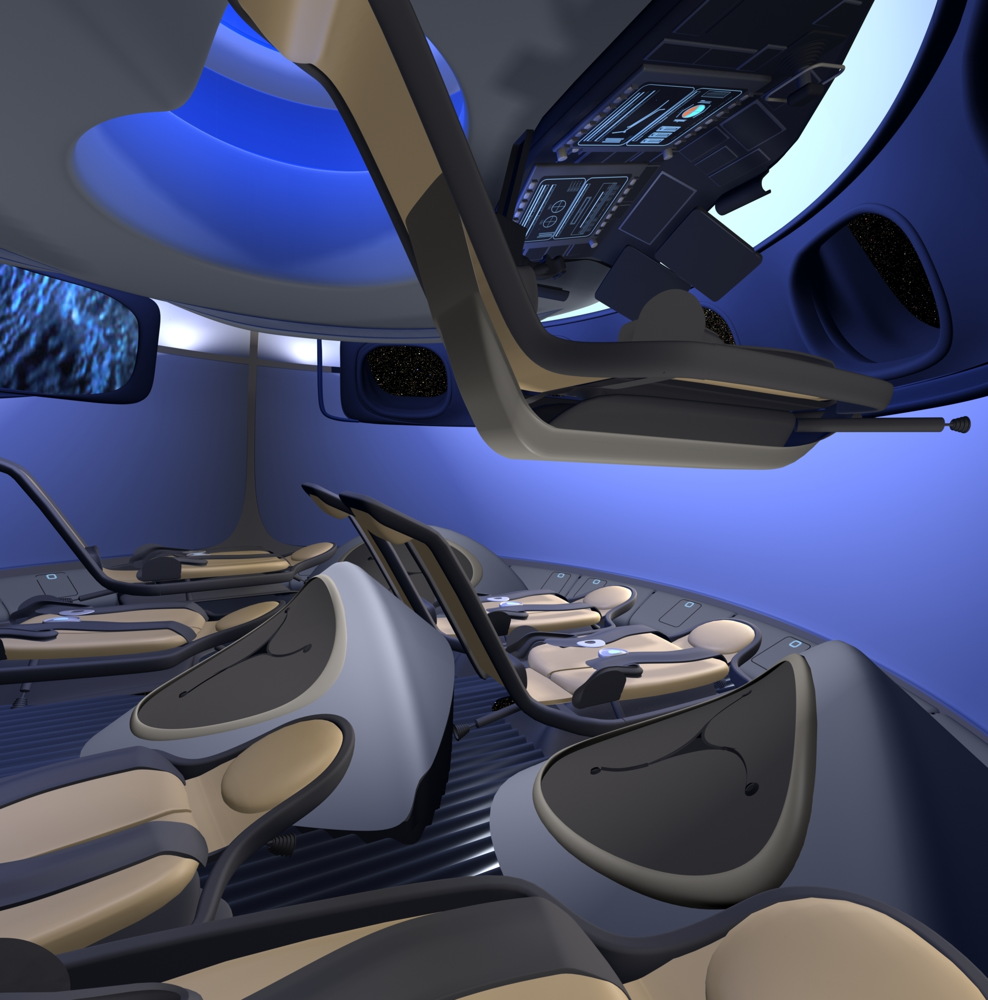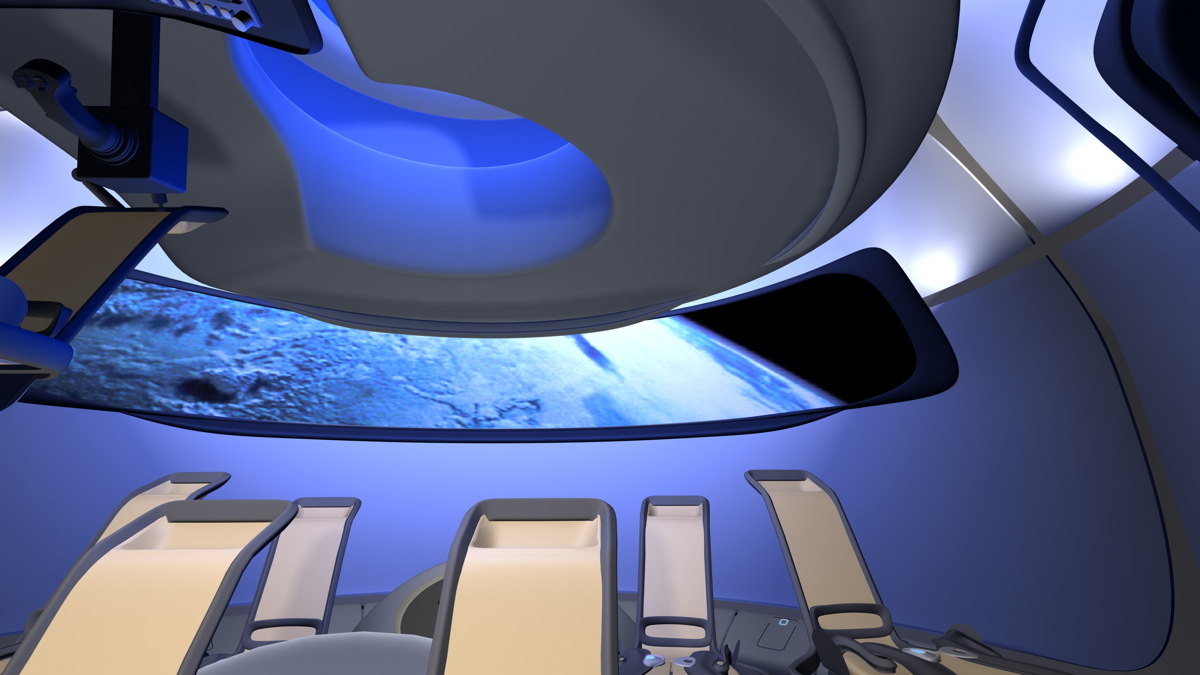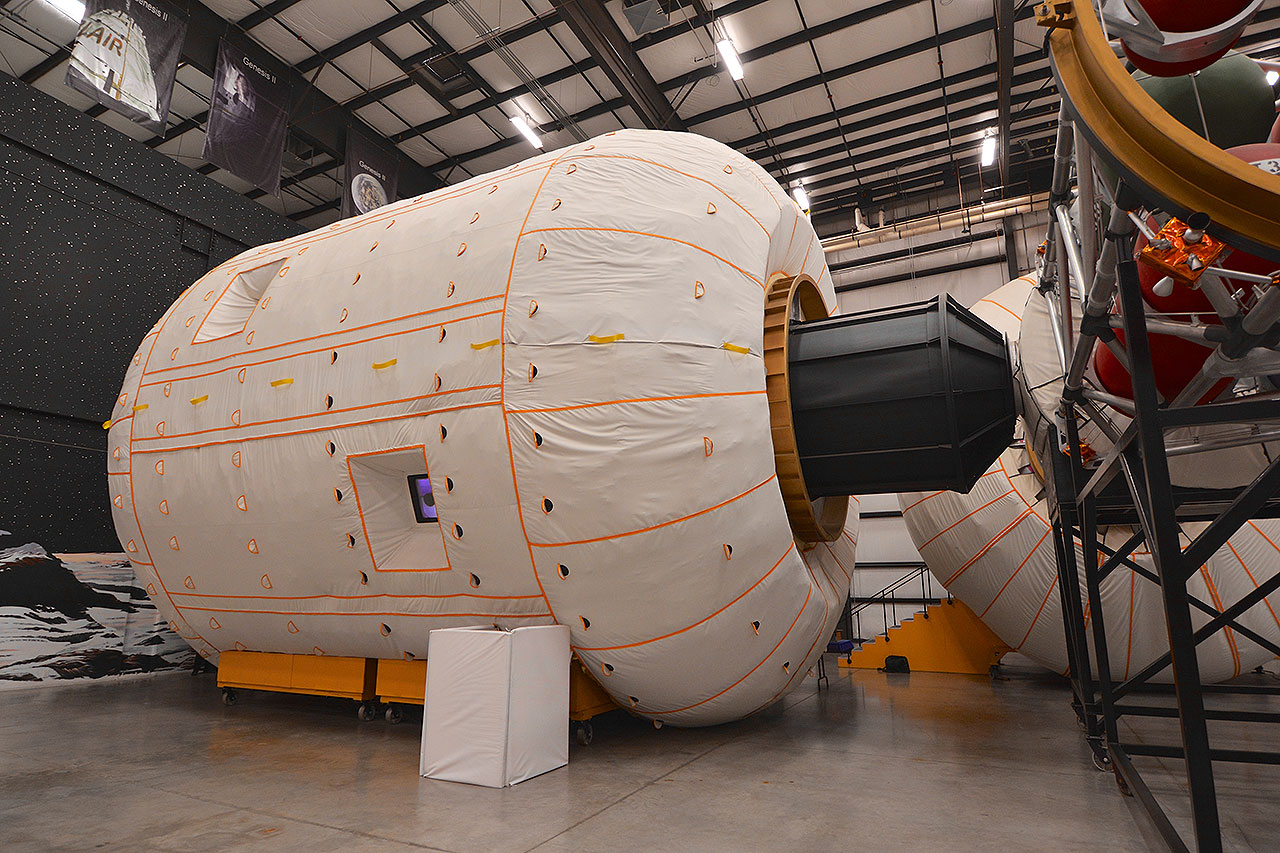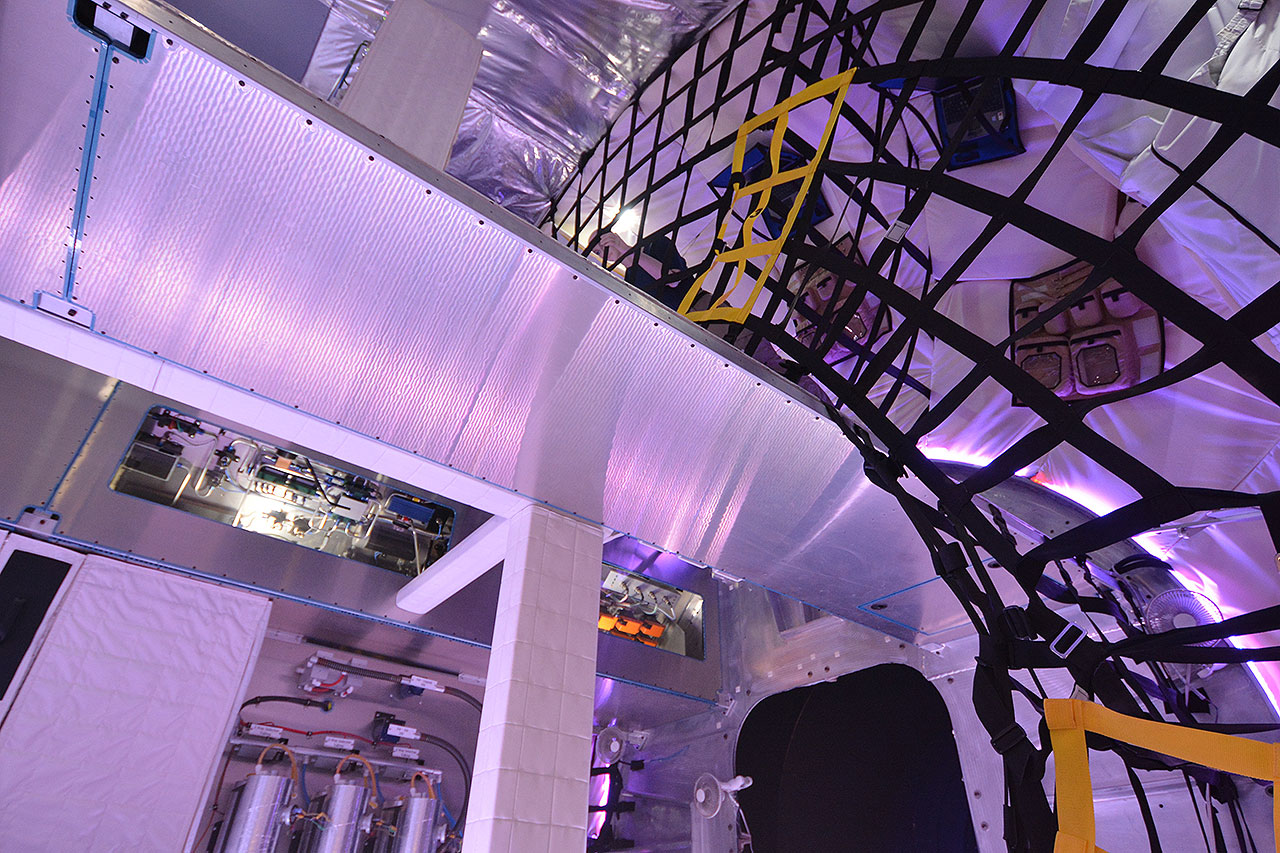Boeing Unveils Cabin Design for Commercial Spaceliner (Images)

LAS VEGAS — Boeing has seen the future of private human spaceflight, and it is blue. Sky blue, that is.
The aerospace giant on Wednesday (April 30) unveiled its new concept for the cabin of a future commercial spaceliner — a vision based in part on the blue-lit Boeing "Sky" interior of the company's modern airliners, as well as work on the company's CST-100 space capsule to ferry NASA astronauts on roundtrips to the International Space Station.
"As we find ourselves on the verge of commercial flight … we begin to think, 'What does come next? Provided there is a destination for them out there, how will that passenger want to go back and forth?'" said Chris Ferguson, a former astronaut who commanded NASA's final space shuttle mission in 2011 and now serves as Boeing's director of crew and mission operations for the commercial crew program.
To reveal what they think the answers to those questions are, Ferguson joined other Boeing representatives at the Las Vegas facilities of the company now building a possible destination for Boeing's capsule: a private space station under development by Bigelow Aerospace. The Bigelow BA 330 commercial habitatutilizes inflatable modules to provide large living and work spaces for commercial researchers and private individuals. [The Inflatable Space Stations of Bigelow Aerospace (Images)]
"Our plan is to have two of our BA-330 modules ready to ship to the launch site by the end of 2016," said Jay Ingham, Bigelow's vice president and program manager for the BA 330. "But the actual launching of those vehicles and the space operations that go on with those is very dependent on us, or us as a country, having a space transportation system to get crew and cargo back and forth to our modules."
Space for 10 … in space
Boeing developed the CST-100 capsule to compete for NASA’s space station crew launch business after the agency retired its space shuttle fleet. The capsule is designed to launch on an expendable Atlas 5 rocket. NASA will be selecting one or more companies in August of this year, with the aim of reaching flight operations in 2017.
Breaking space news, the latest updates on rocket launches, skywatching events and more!
Based on NASA's needs for the vehicle, Boeing developed a cabin that seats four crew members, while reserving a fifth space for either a fifth passenger or additional cargo. [Boeing's Commercial Space Capsule Vision (Video)]
But that design wasn't necessarily optimized for a truly commercial spaceliner.
"We realized the potential to develop for international commercial customers a premium spacecraft interior architecture," said Rachelle Ornan, regional director of sales and marketing for Boeing Commercial Airplanes. "The CST-100 interior is [already] leaps and bounds beyond interiors we have seen in the past. It is less government-issue looking; it is a lot cleaner and simpler — it's cheerful."
"So there was a lot of opportunity to imagine — because we are from Boeing Commercial Airplanes, to take our skills and expertise that we utilize every single day to understand the passenger experience, revenue generation for operators to make sure the business is a success, and apply those to principles to the interior of the spacecraft," Ornan said.
In addition to the blue Sky lighting, which Boeing also integrated into the NASA version of its capsule, the new commercial interior focused on redesigning the seating.
"There is a possibility of actually having nine seats in the lower section, with a seat that has been raised in the capsule for the pilot station — so that's a total of 10," said Rick Fraker, an industrial designer for Boeing.
The number of seats that actually fly will depend on several factors, including customers' desire for storage space, Fraker added. The CST-100 spaceliner utilizes the same location for its "overhead bins" as it does its chairs, so the renderings of the new design show three of the seats being replaced by storage containers. [Now Boarding: The Top 10 Private Spaceships]
The design of the seats also considered the amount of time passengers would spend in them.
"The idea was to minimize the seating configuration in some ways because what we imagined would be important in space travel is maximizing the free volume once you are in zero-g," Fraker said. "So unlike in an aircraft, we're not exploiting the comfort equation in the spacecraft. [Instead], we're going to try to provide enough space in the capsule to allow passengers to freely move about the capsule."
The ultimate window seats
Further distinguishing Boeing's spacecraft from its aircraft design is the use of windows. As the new renderings show, the capsule's windows are located near the pilot's station. For passengers, a large digital display is envisioned.
"A tenet of Boeing Commercial Airplanes' philosophy is that you provide a view to the outside. It is very important for connecting airline passengers to the magic of flight," Ornan told Space.com. "We attempted to do something similar."
"We do have some images that show multiple windows, and in general, we do believe it is feasible — although windows add weight, and they add cost and a lot of complexity, just as they do on airplanes," Ornan added.
Ferguson weighed in from a shuttle commander's point of view.
"This is that very passionate discussion between designers and some of the architects who want to see what they can see, and the engineers who have to implement it," the former astronaut said. "The shuttle windows had three panes of glass … and you were looking through about 5 inches of glass. So you can imagine the weight that comes with that."
"We would love to build windows that give the passenger that full experience," Ferguson added. "But what is that right balance between the customer experience and practicality?"
Expanding the business case
Boeing's decision to move forward with a commercial version of its CST-100 largely hinges on if NASA hires the company to fly astronauts to the space station.
"Right now, our business model closes on the NASA business alone," Ferguson told Space.com. "We're not hinging on the 'maybes' out there."
One of those "maybes" is Bigelow Aerospace, which, with its BA 330 inflatable space habitat, is pursuing what it sees as fulfilling a commercial need not being met by the International Space Station alone. Bigelow, however, is also working with the U.S. space agency.
"We've also been working with NASA on a program we're calling BEAM, which is our Bigelow Expandable Activity Module," Ingham said. "[BEAM] will give the International Space Station a taste of what an expandable module from Bigelow can do, and it will also give us experience in a manned space environment."
To date, Bigelow has launched two similarly sized unmanned Genesis test modules, which remain in orbit today. BEAM, which is set to launch in July 2015 and be attached to the space station for two years, will be the first time the company has had people interacting with their inflatable system in space.
Pearlman attended the CST-100 media event for Space.com on a trip paid for by the Boeing Co.
Robert Z. Pearlman is a Space.com contributing writer and the editor of collectSPACE.com, a Space.com partner site and the leading space history-focused news publication. Follow us @Spacedotcom, Facebook and Google+. Original article on Space.com.

Robert Pearlman is a space historian, journalist and the founder and editor of collectSPACE.com, a daily news publication and community devoted to space history with a particular focus on how and where space exploration intersects with pop culture. Pearlman is also a contributing writer for Space.com and co-author of "Space Stations: The Art, Science, and Reality of Working in Space” published by Smithsonian Books in 2018.
In 2009, he was inducted into the U.S. Space Camp Hall of Fame in Huntsville, Alabama. In 2021, he was honored by the American Astronautical Society with the Ordway Award for Sustained Excellence in Spaceflight History. In 2023, the National Space Club Florida Committee recognized Pearlman with the Kolcum News and Communications Award for excellence in telling the space story along the Space Coast and throughout the world.




